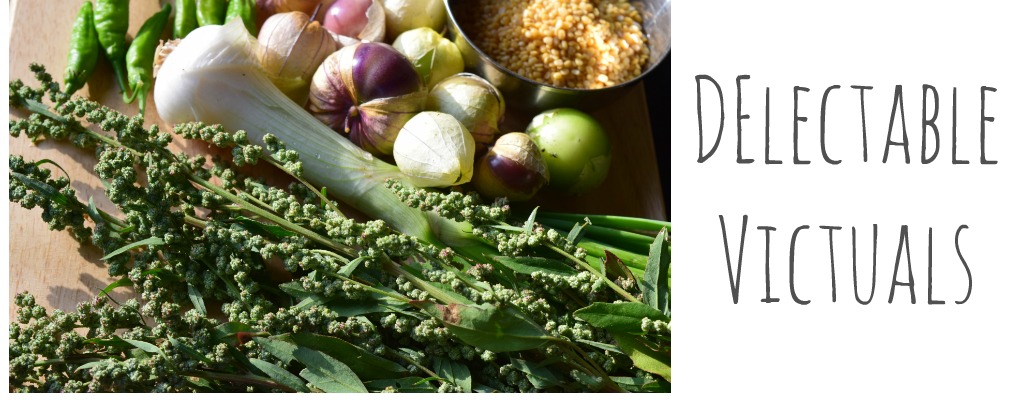Bibimbap
A fairly authentic version of bibimbap came into my life about 12 years ago when a Korean fellow student introduced Bulgogi and Bibimbap to me. Bulgogi (bool-go-gi) apparently roughly translates to fired meat or fire-cooked meat, and, by default the meat is beef in Korea. Since I don't eat red meat, I skipped trying Bulgogi that she ordered that day.
However, she talked to the waitress and assured me that they serve Bibimbap (bee-bim-baab) without any meat. So, I ordered it with slight apprehension and figured I could always have some rice-and-yogurt when I get home if I couldn't eat this strange sounding new dish. But, when it arrived, with visually stimulating presentation and aroma, I was excited. And, I loved it instantly! Loved the hot sauce Gochujang that came with it as well.
As far as I understood then, Bibimbap is a good way to clear out the fridge - it is simply rice served with an assortment of vegetables, accompanied by Korean hot sauce Gochujang. Typically, seasoned bok choy, seasoned spinach, cool cucumber salad to clear the palate, some julienned blanched/steamed vegetables like carrots, zucchini, and maybe some form of eggs - either fried or boiled, all of it served over rice that is piled on crisp lettuce leaves to balance out the flavors.
This recipe here is just a version of Bibimbap that I have adapted to suit my tastes over the years. Gochujang was not handy, so, I made up a version of it as well. I usually have a huge jar of Sambal Oelek in my pantry, seems like it has become just as indispensable as salt or black pepper in my kitchen.
Ingredients
Seasoned Bok Choy or Spinach or Swiss chard
Pan-fried Tofu (optional)
Boiled Egs
Cucumber Salad
Toasted Sesame Seeds
Finely chopped Spring Onions
Sauteed eggplant
Steamed Asparagus
Julienned fresh baby tender kohlrabi
Shredded purple cabbage marinated in apple cider vinegar and some strong Dijon mustard
Bean Sprouts, Baby Corn, Roasted Red Pepper, Zucchini, Carrots or other vegetables of your choice
For Gochujang: Either buy it from the store, or, use a substitute recipe as given by Madhur Jaffrey in her World Vegetarian cookbook, adapted here:
2 Tbsp red miso
2 Tbsp sambal oelek
1 Tbsp cayenne pepper or red chili powder (optional, for extra heat)
1 tsp brown sugar
toasted sesame seeds
1 Tbsp sesame oil
Combine the above ingredients, add some rice wine vinegar if preferred to get the sauce more runny. Also, can double the amount and prepare this ahead of time and save in an air-tight container for a couple of weeks in the fridge.
Seasoned Bok Choy or Spinach:
3-4 cloves of garlic, finely minced
1 Tbsp grated ginger
2-3 dry red chilies
Bok Choy or Spinach, cleaned and cut to bite-size pieces
some water or broth
1 tsp sesame oil or canola oil
Heat the oil in a wok or pan, sauté the garlic and ginger, add the dry red chilies, then add the greens, some broth/water, cover and cook till tender but not mushy. Adjust salt to taste with light soy sauce or just table salt.
Cucumber Salad
Any simple cucumber salad is fine, but, I like to peel, core and dice the cucumber and red onions, add a simple vinaigrette of sesame oil, lemon juice, salt and red chili powder or cayenne pepper powder.
To Serve: Prepare a bed of lettuce leaves or blanched Napa Cabbage leaves. Add a scoop of cooked rice (I prefer Jasmine rice for this recipe). Arrange the toppings separately over the rice - seasoned greens, sliced boiled eggs, pan-fried tofu, cucumber salad, julienned vegetables - place some gochujang in the center, sprinkle some chopped spring onions and toasted sesame seeds. Let the guest mix it all up as they eat.
Also, I like to serve some extra gochujang, spring onions and other toppings on the side for extra helpings with rice :)





1 Comments:
At 8:03 PM, Cynthia said…
Cynthia said…
I've never had Korean food before but of all that I have seen of it, I like the variety.
Post a Comment
<< Home